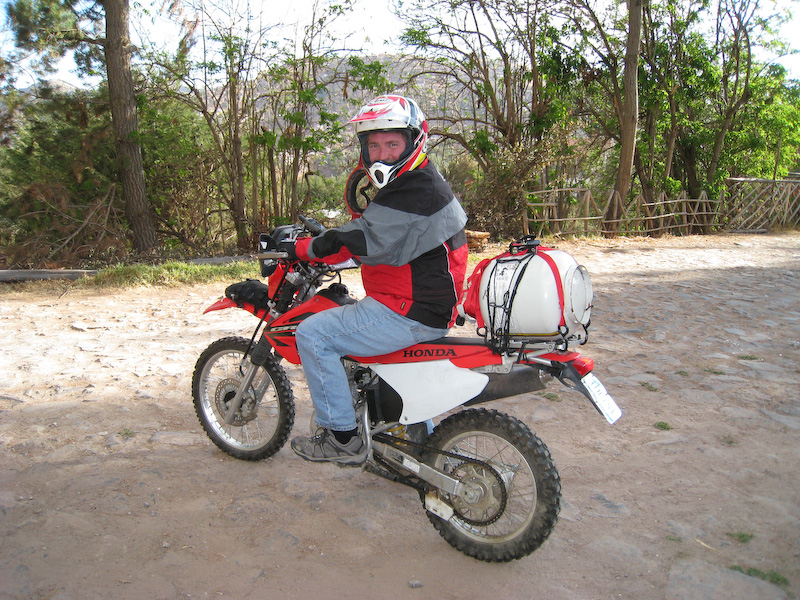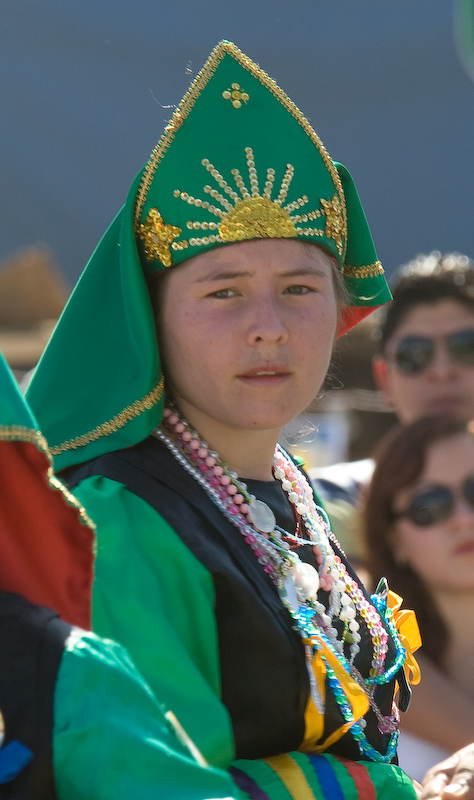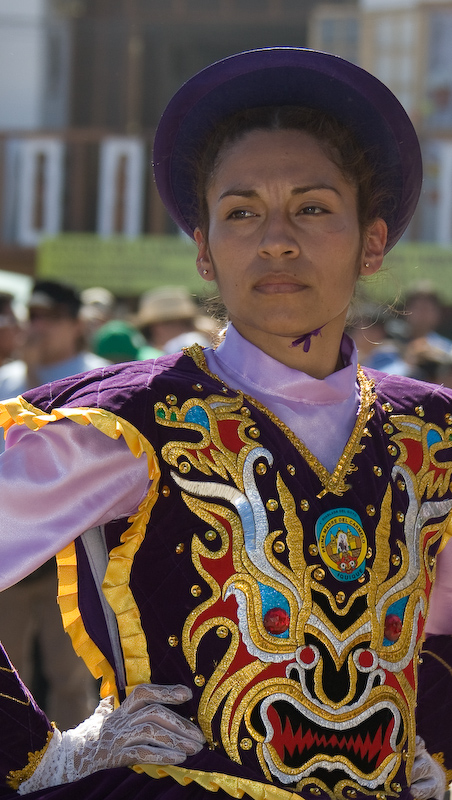In the tourist areas the little kids and some old people work the tourists for shots. They bring a newborn lamb or a baby llama, dress in costume and pose for tips.
The market ladies are just living their life. They dress that way everyday because they want to not for the tourists or the shooters.
In a market setting I ask permission for a direct shot, e.g. "Can I take a photo of your hats/meat/sewing machine/etc." I usually only shoot a working person's face if I buy something from them or make a commercial arrangement with them. They are there trying to make a living, not provide photo modeling services.
The candid shots are done at a standoff distance with a 28-300. With the 1D sensor (1.3) that works out to be a 400 at full extension. A long lens is a key tool to capturing everyday life with people just being themselves.
For closeups or direct shots it is always best to ask permission. If you are not in a tourist area, many people are flattered to have someone ask to take their photo. Digital photography makes it easy to instantly share results by showing people the image on the camera.
In tourist areas people are usually jaded and really tired of people shoving a lens in their face. They will often be brusque or demand payment. That factor is one of the reasons we limit our time in tourist areas as much as possible.
For our philanthropic work,
www.GivingPictures.org, we find people who have never held a photo of themselves before and give them one. That is a different type of scenario than a small town market or tourist area. Those settings are usually remote areas. Depending on the situation we may have been around the people for a while so they are more relaxed or they may be pretty uptight because they have never experienced having their photo captured before. In either case, those faces portray some pretty powerful emotions.
So, long answer to a short question. Here's a more concise version.
You get the best travel people shots by either:
- Capturing candid moments by using a long lens. Downside is the telephoto effect of flattening the image.
- Directly paying someone working the tourists to pose for you. Downside is it is a false moment and certainly not unique. Upside is it might be the only shot you get of people in costume, etc.
- Spending time with regular people living their regular lives off the tourist trail. Engender some trust in them and them in you and your shots will reflect the investment.
- Creating a different relationship where instead of taking their picture you are giving them one.




